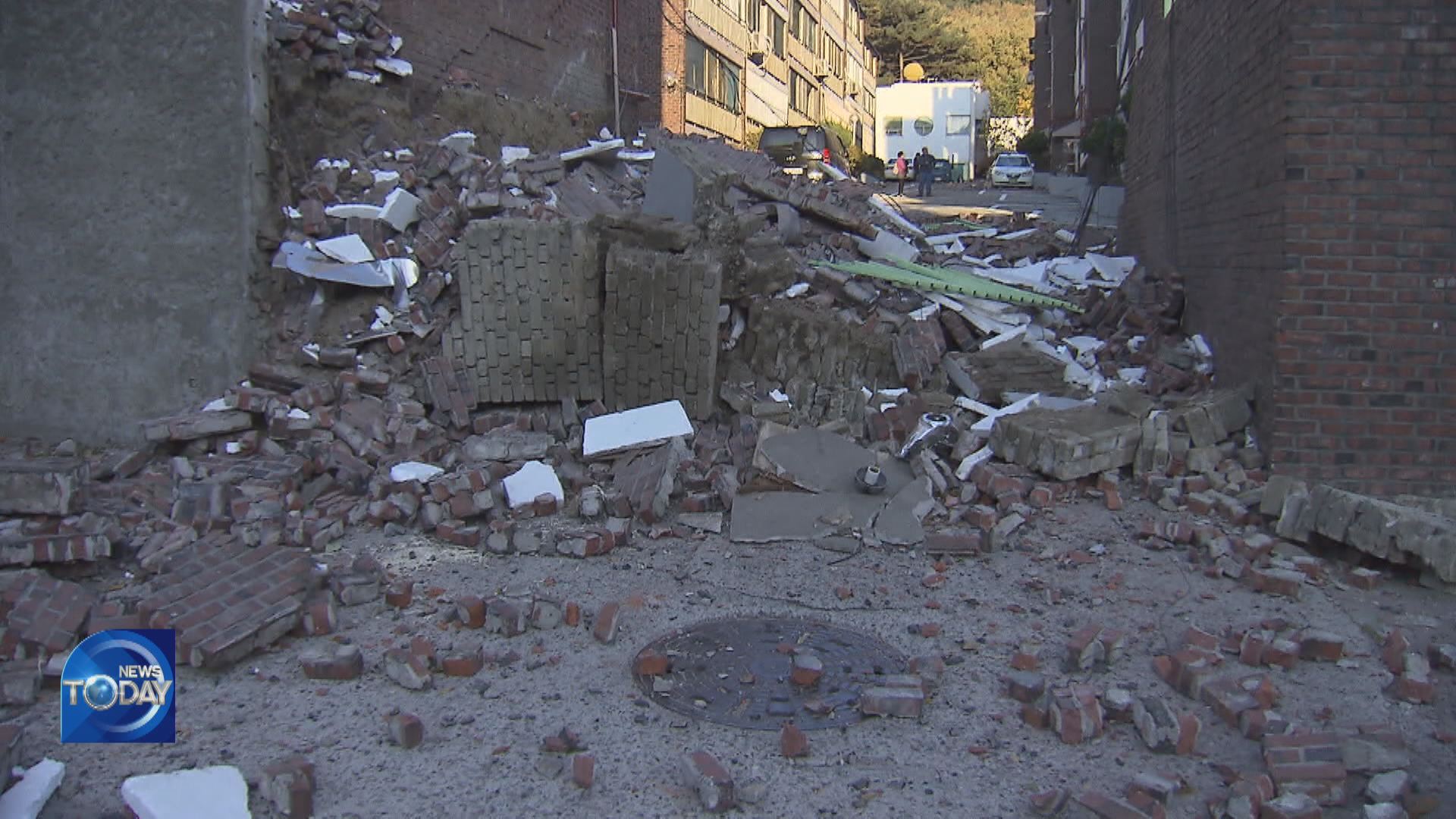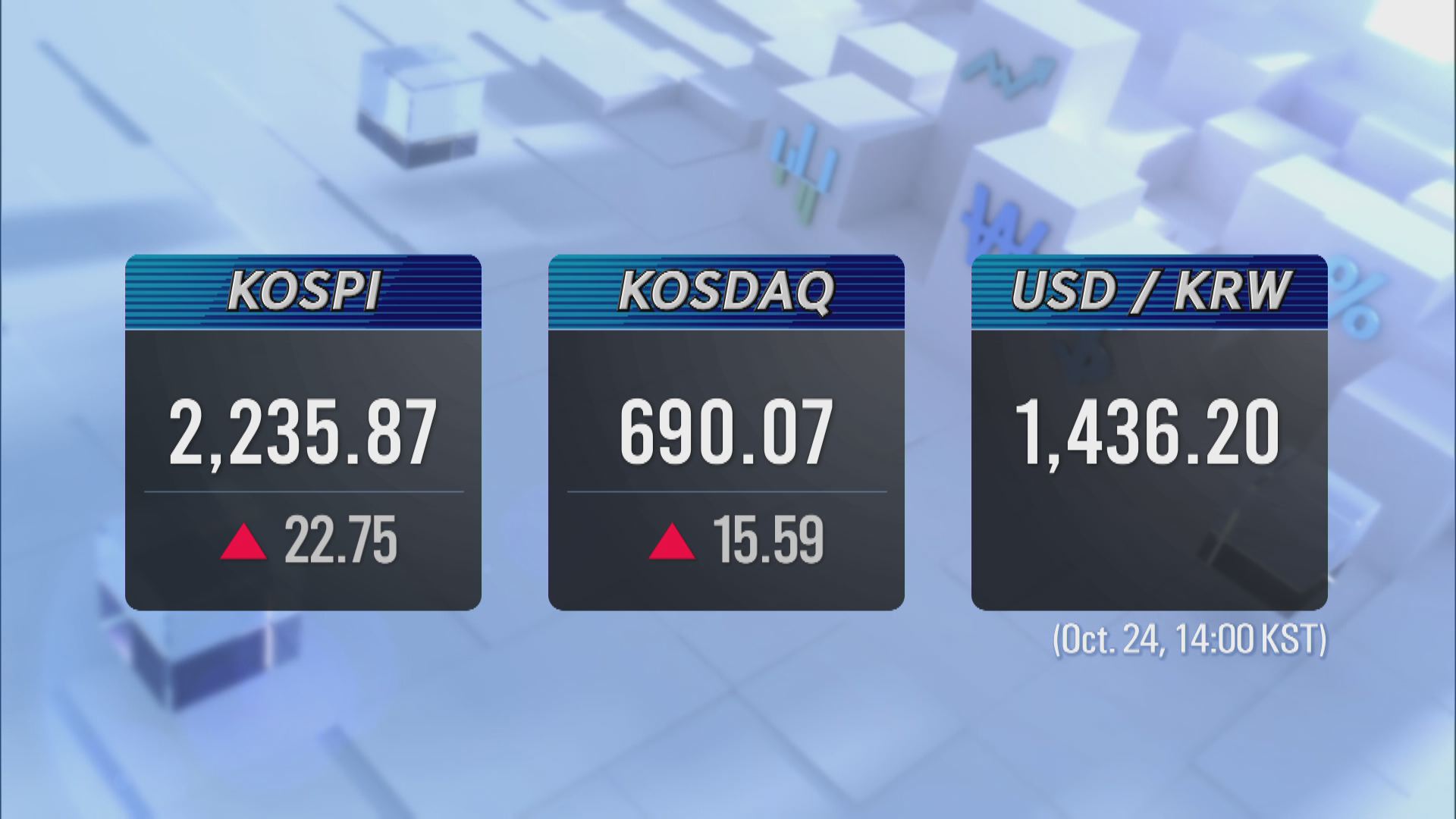DISCOVERY OF TWO LARGE FAULTS
입력 2022.10.24 (15:16)
수정 2022.10.24 (16:45)
읽어주기 기능은 크롬기반의
브라우저에서만 사용하실 수 있습니다.
[Anchor Lead]
Two large faults were discovered near the Naenam fault of Gyeongju where Korea's most severe earthquake occurred in 2016. As earthquakes have been plaguing the nations recently, it became more urgent to carry out preventive measures.
[Pkg]
There is a long valley that begins at the Nakdonggang River estuary and goes all the way to Yeongdeok through Gyeongju in Gyeongsangbuk-do Province. This is the Yangsan fault spanning 180 kilometers. The Gyeongbu Expressway was built along this valley and new roads and cities crowded the area. But in 2016, the biggest ever recorded earthquake in Korea occurred at the Naenam fault near this Yangsan fault. A magnitude 5.8 earthquake hit the city of Gyeongju. This devastating earthquake prompted the government to look for other faults that might cause more earthquakes. Based on the aerial photographs taken before the road construction and using the light detection and ranging or Lidar device that can penetrate even vegetation large active faults were discovered in two segments - the town of Wolsan-ri in Gyeongju and Inbo-ri in Ulsan. These faults are just ten kilometers away from the Naenam fault, the epicenter of the 2016 Gyeongju earthquake. Some twenty active faults were reported along the Yangsan fault but this is the first time that a fault was found near Gyeongju.
[Soundbite] Choi Jin-hyuck(Korea Institute of Geoscience and Mineral Resources) : "A quaternary fault activity indicates another potential earthquake because there’s been earthquakes under the current environment."
There is no time to dawdle. Since an earthquake could occur anytime, standards for earthquake-resistant building and facility designs must be set up and reinforcement carried out promptly. Also, additional studies should be carried out such as an analysis of the fault zone.
[Soundbite] Kim Young-joo(Science, ICT, Broadcasting and Communications Committee) : "The gov’t should disclose the active fault study findings and devise earthquake-resistant measures to reinforce nearby structures."
It is also important to expand the research that had focused on the Yangsan fault to all areas of the nation to build an accurate earthquake database.
Two large faults were discovered near the Naenam fault of Gyeongju where Korea's most severe earthquake occurred in 2016. As earthquakes have been plaguing the nations recently, it became more urgent to carry out preventive measures.
[Pkg]
There is a long valley that begins at the Nakdonggang River estuary and goes all the way to Yeongdeok through Gyeongju in Gyeongsangbuk-do Province. This is the Yangsan fault spanning 180 kilometers. The Gyeongbu Expressway was built along this valley and new roads and cities crowded the area. But in 2016, the biggest ever recorded earthquake in Korea occurred at the Naenam fault near this Yangsan fault. A magnitude 5.8 earthquake hit the city of Gyeongju. This devastating earthquake prompted the government to look for other faults that might cause more earthquakes. Based on the aerial photographs taken before the road construction and using the light detection and ranging or Lidar device that can penetrate even vegetation large active faults were discovered in two segments - the town of Wolsan-ri in Gyeongju and Inbo-ri in Ulsan. These faults are just ten kilometers away from the Naenam fault, the epicenter of the 2016 Gyeongju earthquake. Some twenty active faults were reported along the Yangsan fault but this is the first time that a fault was found near Gyeongju.
[Soundbite] Choi Jin-hyuck(Korea Institute of Geoscience and Mineral Resources) : "A quaternary fault activity indicates another potential earthquake because there’s been earthquakes under the current environment."
There is no time to dawdle. Since an earthquake could occur anytime, standards for earthquake-resistant building and facility designs must be set up and reinforcement carried out promptly. Also, additional studies should be carried out such as an analysis of the fault zone.
[Soundbite] Kim Young-joo(Science, ICT, Broadcasting and Communications Committee) : "The gov’t should disclose the active fault study findings and devise earthquake-resistant measures to reinforce nearby structures."
It is also important to expand the research that had focused on the Yangsan fault to all areas of the nation to build an accurate earthquake database.
■ 제보하기
▷ 카카오톡 : 'KBS제보' 검색, 채널 추가
▷ 전화 : 02-781-1234, 4444
▷ 이메일 : kbs1234@kbs.co.kr
▷ 유튜브, 네이버, 카카오에서도 KBS뉴스를 구독해주세요!
- DISCOVERY OF TWO LARGE FAULTS
-
- 입력 2022-10-24 15:16:36
- 수정2022-10-24 16:45:05

[Anchor Lead]
Two large faults were discovered near the Naenam fault of Gyeongju where Korea's most severe earthquake occurred in 2016. As earthquakes have been plaguing the nations recently, it became more urgent to carry out preventive measures.
[Pkg]
There is a long valley that begins at the Nakdonggang River estuary and goes all the way to Yeongdeok through Gyeongju in Gyeongsangbuk-do Province. This is the Yangsan fault spanning 180 kilometers. The Gyeongbu Expressway was built along this valley and new roads and cities crowded the area. But in 2016, the biggest ever recorded earthquake in Korea occurred at the Naenam fault near this Yangsan fault. A magnitude 5.8 earthquake hit the city of Gyeongju. This devastating earthquake prompted the government to look for other faults that might cause more earthquakes. Based on the aerial photographs taken before the road construction and using the light detection and ranging or Lidar device that can penetrate even vegetation large active faults were discovered in two segments - the town of Wolsan-ri in Gyeongju and Inbo-ri in Ulsan. These faults are just ten kilometers away from the Naenam fault, the epicenter of the 2016 Gyeongju earthquake. Some twenty active faults were reported along the Yangsan fault but this is the first time that a fault was found near Gyeongju.
[Soundbite] Choi Jin-hyuck(Korea Institute of Geoscience and Mineral Resources) : "A quaternary fault activity indicates another potential earthquake because there’s been earthquakes under the current environment."
There is no time to dawdle. Since an earthquake could occur anytime, standards for earthquake-resistant building and facility designs must be set up and reinforcement carried out promptly. Also, additional studies should be carried out such as an analysis of the fault zone.
[Soundbite] Kim Young-joo(Science, ICT, Broadcasting and Communications Committee) : "The gov’t should disclose the active fault study findings and devise earthquake-resistant measures to reinforce nearby structures."
It is also important to expand the research that had focused on the Yangsan fault to all areas of the nation to build an accurate earthquake database.
Two large faults were discovered near the Naenam fault of Gyeongju where Korea's most severe earthquake occurred in 2016. As earthquakes have been plaguing the nations recently, it became more urgent to carry out preventive measures.
[Pkg]
There is a long valley that begins at the Nakdonggang River estuary and goes all the way to Yeongdeok through Gyeongju in Gyeongsangbuk-do Province. This is the Yangsan fault spanning 180 kilometers. The Gyeongbu Expressway was built along this valley and new roads and cities crowded the area. But in 2016, the biggest ever recorded earthquake in Korea occurred at the Naenam fault near this Yangsan fault. A magnitude 5.8 earthquake hit the city of Gyeongju. This devastating earthquake prompted the government to look for other faults that might cause more earthquakes. Based on the aerial photographs taken before the road construction and using the light detection and ranging or Lidar device that can penetrate even vegetation large active faults were discovered in two segments - the town of Wolsan-ri in Gyeongju and Inbo-ri in Ulsan. These faults are just ten kilometers away from the Naenam fault, the epicenter of the 2016 Gyeongju earthquake. Some twenty active faults were reported along the Yangsan fault but this is the first time that a fault was found near Gyeongju.
[Soundbite] Choi Jin-hyuck(Korea Institute of Geoscience and Mineral Resources) : "A quaternary fault activity indicates another potential earthquake because there’s been earthquakes under the current environment."
There is no time to dawdle. Since an earthquake could occur anytime, standards for earthquake-resistant building and facility designs must be set up and reinforcement carried out promptly. Also, additional studies should be carried out such as an analysis of the fault zone.
[Soundbite] Kim Young-joo(Science, ICT, Broadcasting and Communications Committee) : "The gov’t should disclose the active fault study findings and devise earthquake-resistant measures to reinforce nearby structures."
It is also important to expand the research that had focused on the Yangsan fault to all areas of the nation to build an accurate earthquake database.
이 기사가 좋으셨다면
-
좋아요
0
-
응원해요
0
-
후속 원해요
0

















이 기사에 대한 의견을 남겨주세요.